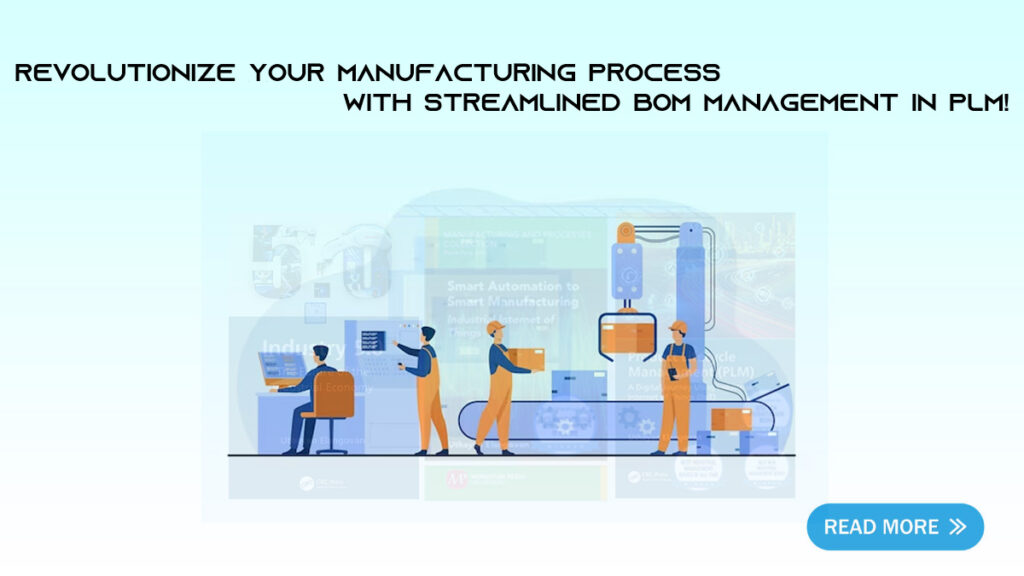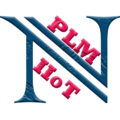Introduction:
Effectively managing Bill of Material (BOM) is crucial for manufacturers across industries. By leveraging Product Lifecycle Management (PLM) systems, manufacturers can streamline their BOM management processes, leading to improved efficiency, cost savings, and enhanced collaboration throughout the product lifecycle. In this article, we will explore the business value and total cost of ownership associated with managing BOMs in PLM, supported by real-world examples.

Streamlined Collaboration and Improved Efficiency:
One of the primary benefits of managing BOMs in a PLM system is streamlined collaboration across various stakeholders involved in the product development process. PLM provides a centralized platform that allows different teams, such as design, engineering, procurement, and manufacturing, to collaborate seamlessly and access up-to-date BOM information in real time.
For example, consider a scenario where a design change is required due to a component’s unavailability. With PLM, the design team can quickly identify alternative components and update the BOM, which automatically triggers notifications to procurement and manufacturing teams. This real-time collaboration ensures that everyone is working with accurate and consistent BOM data, reducing errors, rework, and delays.
Enhanced Product Visibility and Accuracy:
Managing BOMs in PLM enables manufacturers to maintain a single source of truth for product information, ensuring consistent and accurate data across the organization. This visibility empowers manufacturers to make informed decisions throughout the product lifecycle.
Take the example of a complex product that undergoes multiple revisions during its development. PLM captures each change, allowing manufacturers to trace the evolution of the BOM, including the rationale behind specific design decisions. Such visibility not only aids in quality control but also helps manufacturers identify cost-saving opportunities by analyzing the impact of design changes on the BOM and associated costs.
Cost Savings and Waste Reduction:
Effective BOM management in PLM can lead to significant cost savings and waste reduction throughout the product lifecycle. By leveraging PLM’s capabilities, manufacturers can optimize their BOMs to eliminate unnecessary components, reduce part proliferation, and standardize designs. These practices not only minimize material costs but also simplify procurement, assembly, and maintenance processes.
Consider a manufacturer that produces different variants of a product for various markets. By using PLM to manage BOMs, they can identify common components across variants and leverage economies of scale in procurement. This consolidation reduces inventory costs, streamlines supply chain operations, and enables just-in-time manufacturing.
Total Cost of Ownership:
The total cost of ownership (TCO) encompasses not only the initial investment but also the ongoing costs associated with managing BOMs. Implementing a PLM system for BOM management might involve software licenses, hardware infrastructure, implementation costs, and user training. However, the long-term benefits outweigh these expenses.
PLM reduces the likelihood of errors, rework, and product recalls, minimizing costs associated with quality issues. Furthermore, it optimizes resource utilization by eliminating manual data entry, reducing administrative overhead, and improving overall productivity.
For SMEs:
Let’s have a look in how BOM is maintained in OpenBOM PLM mainly for Small to Medium Manufacturing business!
OpenBOM is a comprehensive PLM solution that simplifies BOM management for Small and Medium-sized Enterprises. With OpenBOM, SMEs can efficiently maintain their BOMs and streamline their product development processes.
For instance, imagine a small electronics manufacturing company that designs and produces various consumer electronics products. Using OpenBOM, they can create and manage their BOMs in a centralized, cloud-based platform. The intuitive interface allows them to easily define and structure their BOM hierarchy, specifying components, quantities, and relationships.
OpenBOM’s real-time collaboration features enable seamless communication among team members and external partners. SMEs can invite suppliers, engineers, and manufacturers to collaborate directly within the platform, ensuring everyone has access to the latest BOM data. Moreover, OpenBOM integrates with popular design tools such as CAD software, enabling direct synchronization between the design and BOM data. Any changes made to the design are automatically reflected in the BOM, eliminating manual data entry and reducing the chances of errors. OpenBOM also facilitates accurate cost estimation and tracking. SMEs can assign costs to components, track changes in pricing, and generate cost reports. This visibility helps them make informed decisions regarding cost optimization and supplier selection.
In summary, OpenBOM empowers SMEs by providing a user-friendly interface, real-time collaboration, and seamless integration with design tools. By adopting OpenBOM for BOM management, SMEs can enhance efficiency, reduce errors, and streamline their product development process, ultimately driving growth and success in their industry.
Look for some reference book in PLM? Check here.
Conclusion:
Managing Bill of Material in PLM systems offers manufacturers numerous benefits, ranging from streamlined collaboration and improved efficiency to enhanced product visibility and cost savings. By leveraging PLM, manufacturers can optimize their BOMs, reduce waste, and standardize designs, leading to significant cost savings throughout the product lifecycle. Real-time access to accurate BOM information facilitates informed decision-making and improves collaboration across teams. Despite the initial investment, the long-term value derived from PLM adoption outweighs the costs, making it a worthwhile investment for manufacturers seeking to enhance their BOM management processes.


